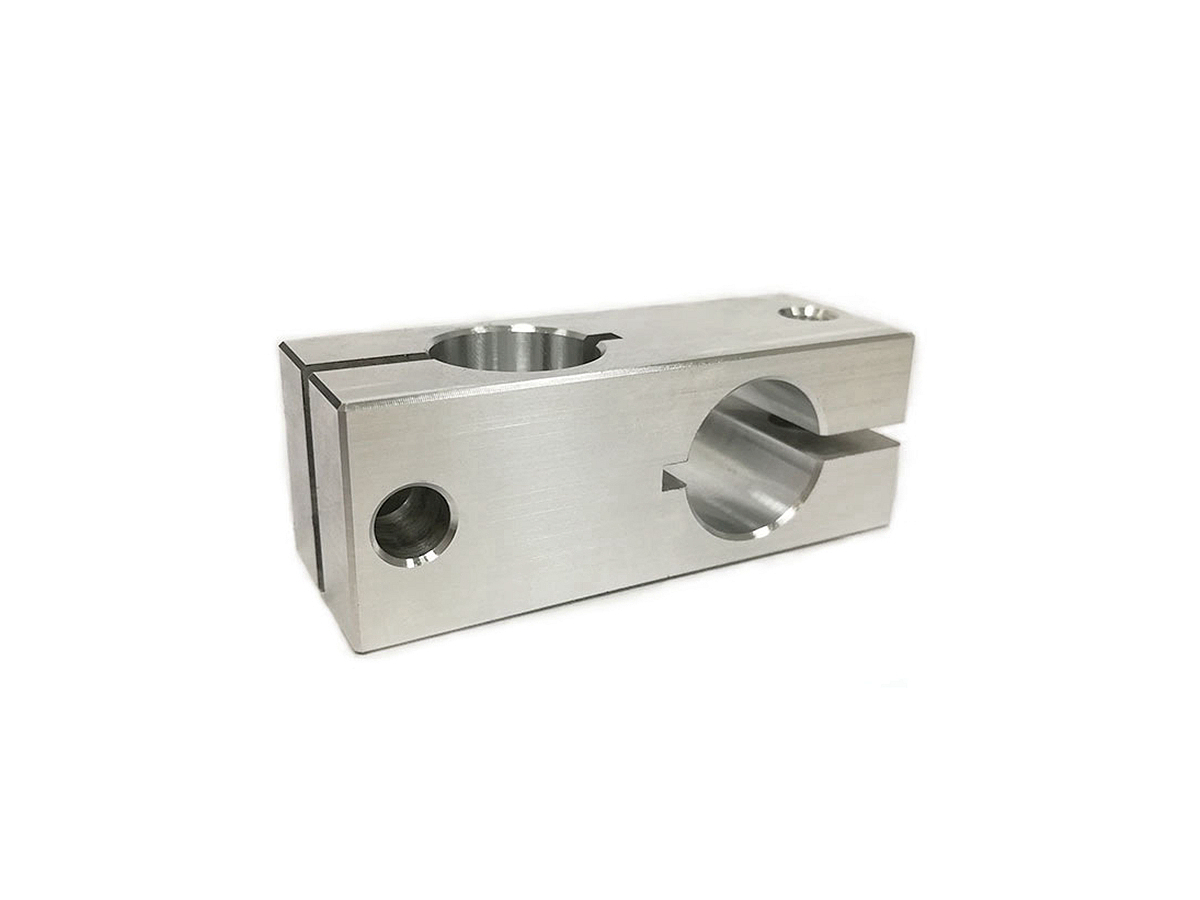Titanium CNC Machined Parts in Consumer Products: Lightweight, Strong, and Corrosion-Resistant
Introduction
The consumer products industry increasingly emphasizes materials that provide exceptional aesthetics, strength, and corrosion resistance without adding unnecessary weight. Titanium alloys, notably Ti-6Al-4V (Grade 5), Ti-3Al-2.5V (Grade 12), and Ti-6Al-4V ELI (Grade 23), offer an optimal balance of durability, corrosion resistance, and lightweight properties, making them perfect for premium consumer goods such as watches, eyewear, sporting equipment, and electronic devices.
Using state-of-the-art CNC machining, titanium components can be precisely fabricated to meet the consumer market's stringent quality and aesthetic standards. CNC machining ensures tight dimensional tolerances, intricate designs, and exceptional surface finishes, significantly enhancing product appeal, functionality, and durability.
Titanium Alloys for Consumer Product Applications
Material Performance Comparison
Material | Tensile Strength (MPa) | Yield Strength (MPa) | Corrosion Resistance | Typical Applications | Advantage |
|---|---|---|---|---|---|
950-1100 | 880-950 | Excellent (>1000 hrs ASTM B117) | Watches, bicycle components | High strength-to-weight, excellent aesthetics | |
620-780 | 483-655 | Excellent (>1000 hrs ASTM B117) | Eyewear frames, outdoor gear | Superior formability, lightweight | |
860-965 | 795-895 | Superior (>1200 hrs ASTM B117) | Premium jewelry, medical wearables | Exceptional biocompatibility, durability | |
860-950 | 780-830 | Excellent (>1000 hrs ASTM B117) | Sporting equipment, portable devices | Balanced strength, corrosion-resistant |
Material Selection Strategy
Selecting titanium alloys for consumer products involves evaluating factors such as aesthetics, strength requirements, and intended use:
High-performance watches and bicycle components that demand both aesthetic appeal and structural integrity choose Ti-6Al-4V (Grade 5) for its impressive tensile strength (up to 1100 MPa), corrosion resistance, and polished finish capability.
Lightweight eyewear frames and outdoor gear requiring superior formability, moderate strength (780 MPa tensile), and excellent corrosion resistance utilize Ti-3Al-2.5V (Grade 12), providing comfort and lasting performance.
Premium jewelry, wearable electronics, and medical-related consumer items needing exceptional biocompatibility, higher purity, and good strength (up to 965 MPa tensile) select Ti-6Al-4V ELI (Grade 23), ensuring safety and aesthetic excellence.
Portable devices, sporting equipment, and structural brackets benefiting from a balance between moderate strength (950 MPa tensile) and low weight leverage Ti-5Al-2.5Sn (Grade 6), optimizing functionality and ease of use.
CNC Machining Processes
Process Performance Comparison
CNC Machining Technology | Dimensional Accuracy (mm) | Surface Roughness (Ra μm) | Typical Applications | Key Advantages |
|---|---|---|---|---|
±0.02 | 1.6-3.2 | Simple brackets, housing parts | Economical, consistent production | |
±0.015 | 0.8-1.6 | Rotational parts, custom fittings | Increased accuracy, fewer setups | |
±0.005 | 0.4-0.8 | Complex parts, intricate designs | High precision, excellent surface finishes | |
±0.003-0.01 | 0.2-0.6 | Premium watch components, small electronics | Maximum accuracy, detailed geometries |
Process Selection Strategy
Selecting the right CNC machining technology for consumer-grade titanium products depends on complexity, required precision, and design details:
Basic housing parts, brackets, and simple structural components needing moderate precision (±0.02 mm) benefit economically from 3 Axis CNC Milling, delivering quality at competitive costs.
Rotational parts, customized fittings, and moderately intricate components requiring increased precision (±0.015 mm) use 4 Axis CNC Milling, reducing setups and enhancing accuracy.
Complex consumer product parts such as intricate watch cases, electronic housings, and sophisticated sporting equipment demanding high accuracy (±0.005 mm) and superior finishes (Ra ≤0.8 μm) significantly benefit from 5 Axis CNC Milling, boosting product appeal and quality.
Precision-engineered components like premium watch movements, specialized small electronics, and intricate jewelry needing the highest precision (±0.003 mm) and complex geometries employ Precision Multi-Axis CNC Machining, maximizing aesthetics and reliability.
Surface Treatment
Surface Treatment Performance
Treatment Method | Corrosion Resistance | Wear Resistance | Max Operating Temp (°C) | Typical Applications | Key Features |
|---|---|---|---|---|---|
Excellent (≥800 hrs ASTM B117) | Moderate-High | Up to 400 | Watches, eyewear, portable devices | Vibrant colors, durable protective coating | |
Outstanding (>1000 hrs ASTM B117) | Very High (HV1500-2500) | Up to 600 | Premium jewelry, watch bezels | Extreme hardness, scratch resistance | |
Excellent (≥1000 hrs ASTM B117) | Moderate | Up to 400 | Sporting equipment, structural brackets | Superior corrosion protection, clean finish | |
Excellent (~900 hrs ASTM B117) | Moderate | Up to 300 | Small electronics, premium accessories | Mirror-like finish, reduced friction |
Surface Treatment Selection
Surface treatments for consumer titanium products are selected based on aesthetic requirements, corrosion resistance, and wear characteristics:
Watches, eyewear frames, and portable electronics benefit significantly from Anodizing, offering vibrant coloration, enhanced corrosion resistance, and a durable finish.
Premium jewelry and watch bezels subject to frequent contact and abrasion require PVD Coating, delivering high hardness (HV1500-2500) and excellent scratch resistance.
Sporting equipment and structural brackets exposed to moisture and frequent use utilize Passivation, ensuring prolonged durability and corrosion protection.
High-end accessories and small electronics needing a luxurious, mirror-like appearance and smooth tactile quality benefit from Electropolishing, providing superior aesthetics and friction reduction.
Quality Control
Quality Control Procedures
Precise dimensional inspections using Coordinate Measuring Machines (CMM) and optical comparators.
Surface roughness testing with high-precision profilometers.
Mechanical testing (tensile, yield, fatigue) according to ASTM standards.
Corrosion testing via ASTM B117 (Salt Spray Test).
Non-destructive testing (NDT) such as ultrasonic and X-ray inspections.
Detailed documentation in compliance with ISO 9001 and consumer industry quality standards.
Industry Applications
Titanium Consumer Product Applications
Premium watches and jewelry components.
Lightweight sports and outdoor equipment.
Eyewear frames and personal electronic devices.
High-end lifestyle products and accessories.
Related FAQs:
Why choose titanium for consumer products?
How does CNC machining enhance titanium component aesthetics?
Which titanium alloys suit consumer goods best?
What surface treatments enhance titanium durability and aesthetics?
What quality standards apply to titanium consumer products?

